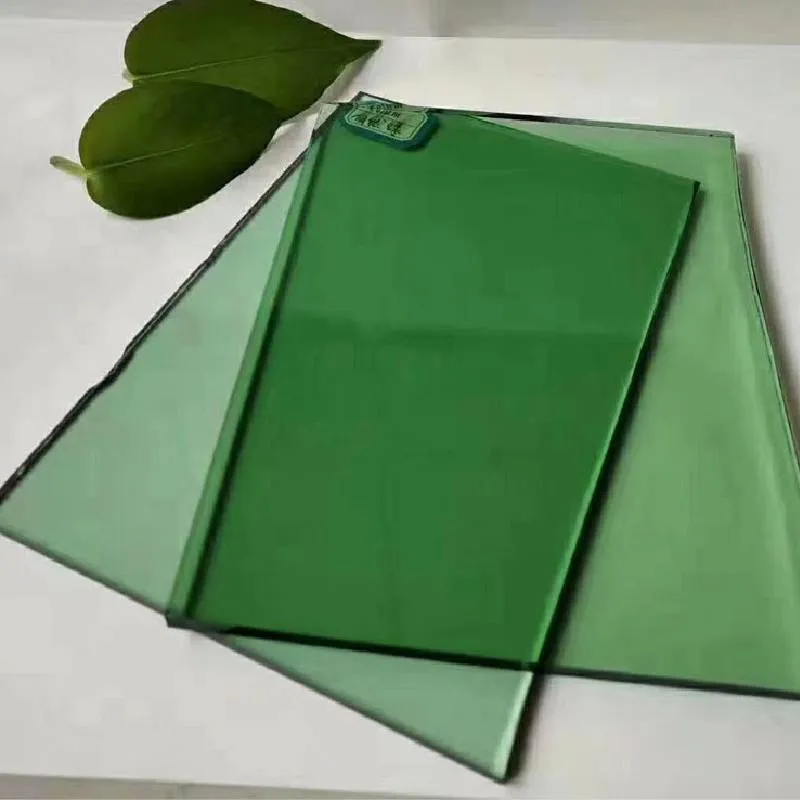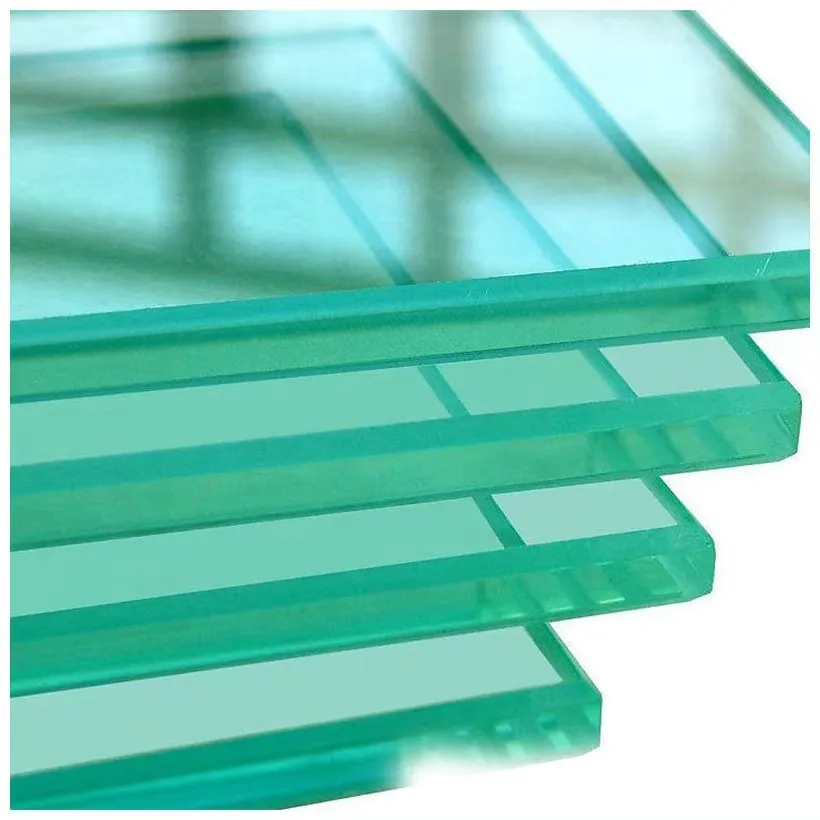Float glass manufacturing is a fascinating process that has revolutionized the glass industry. This technique, perfected in the mid-20th century, continues to be the dominant method for producing high-quality glass products. As an expert in this field, the journey of float glass from raw materials to end product is nothing short of remarkable.

At the heart of float glass manufacturing is the fusion of raw materials, primarily silica sand, soda ash, and limestone. These materials are meticulously selected for their purity and mixed in precise proportions. The mixture is then heated in a furnace at temperatures exceeding 1700°C. This intense heat transforms the raw materials into a molten glass that is both homogeneous and free of impurities.
The real ingenuity of the float glass process is in its unique floating technique. The molten glass flows from the furnace into a bath of molten tin. Due to the density difference, the glass naturally floats on the tin, creating an exceptionally flat and uniform surface. This innovative step eliminates the need for mechanical flattening, ensuring that the glass achieves near-perfect clarity and uniform thickness.

Once on the tin bath, the glass is gradually cooled in a controlled environment called the annealing lehr. This cooling stage is critical to relieve internal stresses, ensuring the glass is robust and less prone to brittleness. Precision is key here; too rapid a cooling process can lead to imperfections, while too slow can cause inefficiencies and increased production costs.
Float glass is not just flat. It is characterized by its excellent optical quality and versatility. It serves as the foundational material for a wide range of specialties in glass products, including coated glass that offers reflective or tinted properties, laminated glass for increased safety, and toughened glass for higher strength. The ability to modify float glass for various applications is one of its defining advantages.
The environmental impact of float glass production has prompted significant innovations aimed at sustainability. Modern plants employ advanced technologies to reduce emissions and energy consumption. Recycling initiatives have also become integral, with cullet—scrap glass from production—being reintroduced into the furnace, decreasing raw material usage and energy demand.
float glass manufacturing
Industry expertise and innovations in automation have further enhanced the float glass manufacturing process. Cutting-edge machinery and robotics ensure precision and efficiency, while real-time monitoring and quality control systems safeguard the integrity of the glass. This integration of technology solidifies float glass manufacturing as a beacon of modern industrial capability.
Trustworthiness in float glass products is established through rigorous certification and testing. Leading manufacturers comply with international standards like ISO and CE, providing assurances of quality and safety. This commitment to maintaining high standards underscores the pride and responsibility that manufacturers uphold in delivering superior glass products.
The use of float glass spans various sectors, including construction, automotive, and interior design. Architects favor it for its aesthetic versatility, while automotive industries rely on its strength and safety features. Interior designers and artists leverage its clarity and beauty in both functional and decorative contexts.
Float glass manufacturing continues to evolve, propelled by research and development. Innovations such as smart glass, which alters light transmission properties, exemplify the dynamic capabilities of float glass. These advancements not only enhance the functionality of glass products but also open new doors for creative and practical applications.
In conclusion, the float glass manufacturing process embodies an intricate balance of art and science. Its evolution from raw materials to refined end products reflects a legacy of innovation, expertise, and commitment to quality. As industries demand ever-higher standards, float glass remains a pivotal component, poised to meet the diverse challenges of today and tomorrow.
 Afrikaans
Afrikaans  Albanian
Albanian  Amharic
Amharic  Arabic
Arabic  Armenian
Armenian  Azerbaijani
Azerbaijani  Basque
Basque  Belarusian
Belarusian  Bengali
Bengali  Bosnian
Bosnian  Bulgarian
Bulgarian  Catalan
Catalan  Cebuano
Cebuano  Corsican
Corsican  Croatian
Croatian  Czech
Czech  Danish
Danish  Dutch
Dutch  English
English  Esperanto
Esperanto  Estonian
Estonian  Finnish
Finnish  French
French  Frisian
Frisian  Galician
Galician  Georgian
Georgian  German
German  Greek
Greek  Gujarati
Gujarati  Haitian Creole
Haitian Creole  hausa
hausa  hawaiian
hawaiian  Hebrew
Hebrew  Hindi
Hindi  Miao
Miao  Hungarian
Hungarian  Icelandic
Icelandic  igbo
igbo  Indonesian
Indonesian  irish
irish  Italian
Italian  Japanese
Japanese  Javanese
Javanese  Kannada
Kannada  kazakh
kazakh  Khmer
Khmer  Rwandese
Rwandese  Korean
Korean  Kurdish
Kurdish  Kyrgyz
Kyrgyz  Lao
Lao  Latin
Latin  Latvian
Latvian  Lithuanian
Lithuanian  Luxembourgish
Luxembourgish  Macedonian
Macedonian  Malgashi
Malgashi  Malay
Malay  Malayalam
Malayalam  Maltese
Maltese  Maori
Maori  Marathi
Marathi  Mongolian
Mongolian  Myanmar
Myanmar  Nepali
Nepali  Norwegian
Norwegian  Norwegian
Norwegian  Occitan
Occitan  Pashto
Pashto  Persian
Persian  Polish
Polish  Portuguese
Portuguese  Punjabi
Punjabi  Romanian
Romanian  Russian
Russian  Samoan
Samoan  Scottish Gaelic
Scottish Gaelic  Serbian
Serbian  Sesotho
Sesotho  Shona
Shona  Sindhi
Sindhi  Sinhala
Sinhala  Slovak
Slovak  Slovenian
Slovenian  Somali
Somali  Spanish
Spanish  Sundanese
Sundanese  Swahili
Swahili  Swedish
Swedish  Tagalog
Tagalog  Tajik
Tajik  Tamil
Tamil  Tatar
Tatar  Telugu
Telugu  Thai
Thai  Turkish
Turkish  Turkmen
Turkmen  Ukrainian
Ukrainian  Urdu
Urdu  Uighur
Uighur  Uzbek
Uzbek  Vietnamese
Vietnamese  Welsh
Welsh  Bantu
Bantu  Yiddish
Yiddish  Yoruba
Yoruba  Zulu
Zulu 


